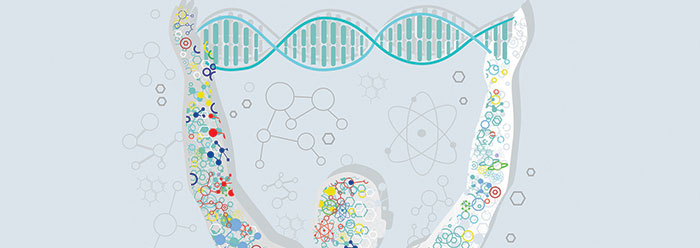Researchers continue to discover unique microbial communities on and in our skin, mouth, gut, and airways. This collection of viruses, bacteria, and fungi is termed the microbiome. Our relationship with our microbiome has been quite intimate from creation since it accomplishes vital tasks for us.
Yet evolutionists and some creationists explain microbe-human relations in warlike paradigms. The overriding question is this: If God originally created the world without death and disease, where did our bodies get their disease-fighting capabilities? Creationists need biblical explanations that are scientifically sound and not simply lighter versions of evolutionary lines of thinking. Therefore, our research views microbes as creatures designed to work in harmonious relationships with other organisms; this view is consistent with creationist biologist Joseph Francis’ proposal over a decade ago that was recently updated.1
Methodology
The author of this article proposes objective design analysis as a useful investigative approach to biological systems. Biological research typically understands systems by disassembling them. This is called reverse engineering. However, design analysis begins with forward engineering. Design researchers think through the major elements and assembly sequences needed to achieve a specific outcome. They also reference similar human-made systems to help predict findings before applying reverse engineering to correlate the functions of the discoveries.
Design analysis methodology describes only measurable innate elements in devices or processes—it does not concoct mystical events to fill in missing information. Therefore, design analysis helps clarify a trait’s true cause. In biological contexts, design analysis also helps expose the lack of evidence for expressions of environmental agency that evolutionists believe are at work.
So, how exactly do these trillions of microorganisms on our body interact, regulate, and harmonize with the individual? Design analysis starts by asking how human engineers could overcome human-microbe dissimilarities and distinct boundaries between them to produce beneficial interaction. Some bridging mechanism is required. A logical design solution demands that the microorganisms and the human must connect through an interface. Assuming a creation perspective, could God have built such an interface in organisms?
Forward Engineering Human-Microbe Interactions
Interfaces help autonomous entities, like humans and microbes, exchange information and material.2 Designers use in-depth knowledge of unrelated systems to integrate their functions with three indispensable interface elements:
1) Authentication mechanisms that differentiate between self and non-self entities;
2) Protocols to standardize rules/processes governing the exchange; functioning through a
3) Medium containing conditions that are mutually accessible to both entities.
Design analysis anticipates that an innate interface system fully controls the harmony between humans and microbes—with human elements displaying the three distinguishing characteristics listed above. We call this a microbe interface system.
Implications
When “immune” systems are interpreted and defined in survival terms, it is liable to mislead. Pre-Fall “defensive” systems may create a conundrum for creationists, but an essential interface system that harmonizes autonomous entities, like humans and microbes, makes perfect sense. Therefore, design analysis can identify naturalistic biases, such as the reference to an interface system as “immune.”
Humans associating with trillions of microbes since the time of creation certainly implies designed interfacing. Seen from this perspective, the human microbe interface system has likely not changed significantly from its original regulatory purpose.
From a design perspective, the “immune” system could be more accurately renamed the “microbe interface” system.
References
- Francis, J. W. 2013. A Creationist View of the Mammalian Immune System: From Red Queen to Social Interface. Journal of Creation Theology and Science. Paper originally presented at the Origins Conference, August 4, 2013, Pittsburgh, Pennsylvania. JTCS Series B: Life Sciences. 3:1-5.
- Clark, K. 2012. Capturing and analyzing interface characteristics, Parts 1 and 2: IBM Developer Works.
*Mr. Sherwin is Research Associate, Senior Lecturer, and Science Writer at the Institute for Creation Research.









